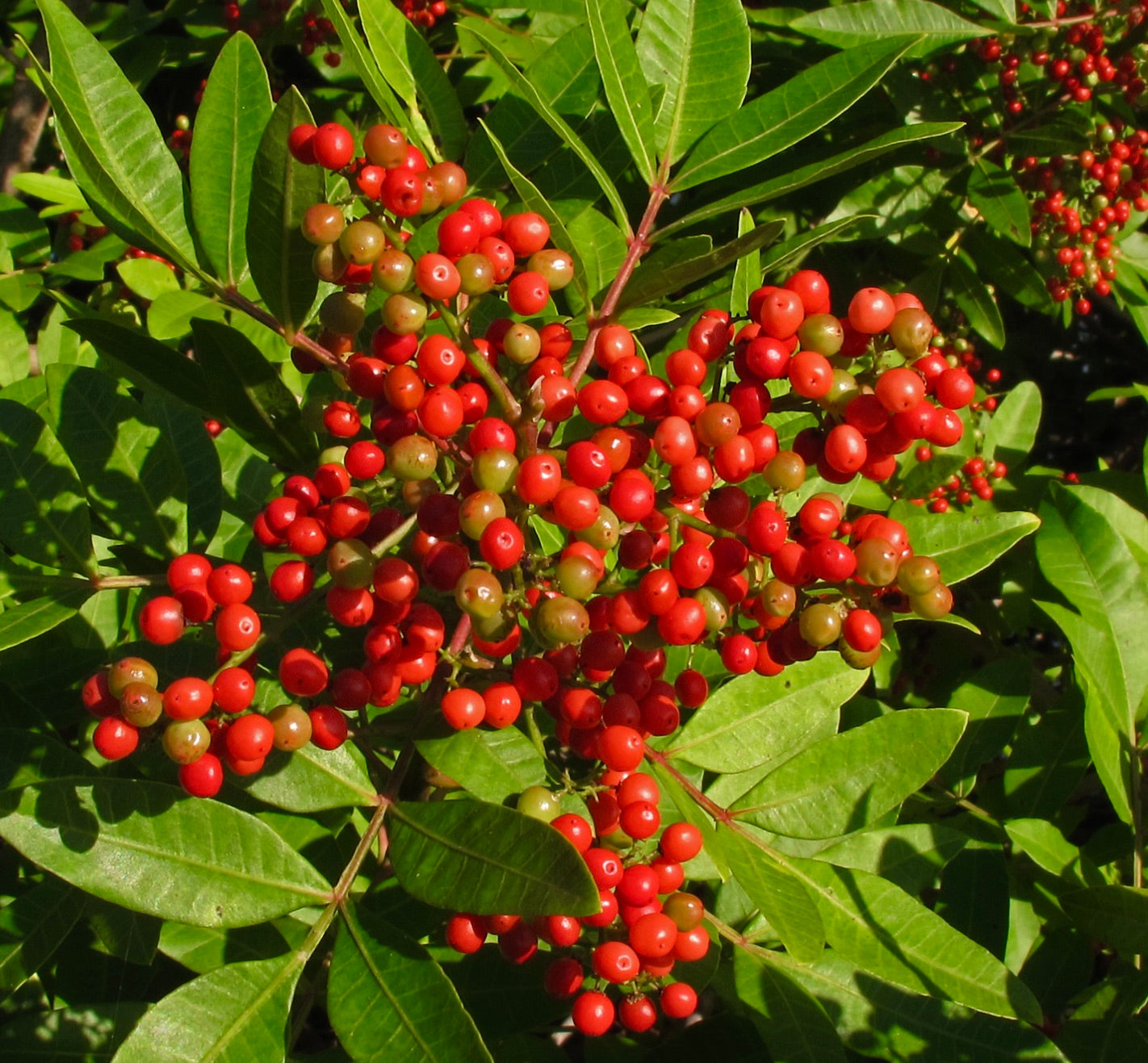Schinus terebinthifolius 20-50cm
Schinus terebinthifolius 20-50cm
Couldn't load pickup availability
Product Description
Schinus terebinthifolius, the Brazilian Pepper Tree, is an evergreen shrub or small tree native to South America. Despite its appealing name, this plant is considered invasive in many regions outside of its natural habitat. Brazilian Pepper Trees are known for their dense, dark green foliage and showy clusters of small, pinkish-white flowers followed by bright red berries. The leaves and berries release a pungent, peppery fragrance when crushed, giving the tree its common name. While the tree may have ornamental appeal, it has become a problematic invasive species in various parts of the world, particularly in Florida and Hawaii, where it threatens native ecosystems.
Cultivation:
-
Location: Avoid planting Brazilian Pepper Trees in areas where they can potentially escape and become invasive. If you live in a region where this plant is invasive, it is best not to cultivate it.
-
Soil: Brazilian Pepper Trees can tolerate a wide range of soil types, including sandy or loamy soils. They are adaptable to different pH levels and can grow in slightly acidic to slightly alkaline soils.
-
Planting: If you are in a region where Brazilian Pepper Trees are not invasive, you can plant them in well-draining soil in a sunny to partially shaded location. Ensure that you have local knowledge and regulations regarding its cultivation.
-
Watering: These trees are drought-tolerant once established but benefit from regular watering during their establishment period. Once they mature, they can withstand periods of drought.
-
Fertilization: Brazilian Pepper Trees do not typically require heavy fertilization. Invasive plants should not be encouraged with fertilizers.
-
Pruning: Pruning may be necessary to control the size and shape of the tree. However, it is essential to be cautious when pruning, as the sap can cause skin irritation.
-
Invasive Concerns: Be aware of the invasive nature of Brazilian Pepper Trees and research local regulations and recommendations regarding its cultivation. In regions where it is invasive, it is often actively controlled or eradicated due to its negative impact on native ecosystems.
-
Seed Disposal: If you are in an area where Brazilian Pepper Trees are invasive, be diligent in disposing of seeds properly to prevent their spread to natural habitats.
-
Alternative Plants: In areas where Brazilian Pepper Trees are invasive, consider planting native or non-invasive species instead to support local ecosystems.
Due to its invasive nature, it is essential to be aware of the potential environmental harm caused by cultivating Schinus terebinthifolius, the Brazilian Pepper Tree, in certain regions. Always follow local guidelines and regulations regarding the planting and management of this species to minimize its negative impact on native ecosystems.
IMPORTANT: Please be aware that picture 1 show adult plant not for sale, the offer is for a plant in the dimension indicated in title description.
SKU:BA-1226-S
Cultivation
Cultivation
Info and Disclaimers
Info and Disclaimers
Plant height: 20-50cm
Pot diameter:
Picture taken on:


